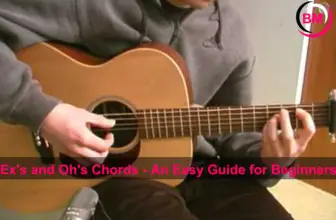Do you want to know the secrets behind chords to house of the rising sun?
“House of the Rising Sun” is a classic folk song that countless artists and performers over the decades have recorded. It’sIt’s beloved for its haunting melody and mysterious lyrics, but what about those chords?
Have you ever wondered what makes them so powerful? Let’sLet’s take a closer look at the chords behind this iconic song to see why it continues to resonate with audiences across generations.
Chords to House of the Rising Sun
The Origins of “House of the Rising Sun”
It is believed that “House of the Rising Sun” was first composed in England in the early 19th century, although some scholars have suggested that it may be even older than that.
Regardless, it quickly caught on and was soon sung around campfires, pubs, and other European gathering spots. It wasn’twasn’t until 1936, when an American musician named Gwen Foster recorded a version on a 78-rpm record that it became truly popular in America.
Understanding the Chords
At its core, “House of the Rising Sun” comprises four simple chords—A minor, D major, E minor, and F# diminshed. What makes these chords work so well together is their ability to create tension between two different tonal centers—in this case, A minor and E minor.
The F# diminished chord adds a unique flavor to this tension and helps move from one section of music to another without breaking momentum or sounding too jarring.
The alternating A minor to E minor pattern creates a sense of longing and sorrow, perfectly matching the sad lyrics. This chord progression also has an extensive range—spanning nearly four octaves—allowing vocalists to express themselves with an expansive soundscape.
Conclusion: Chords to House of the Rising Sun
From its humble beginnings in 19th century England up through today’stoday’s modern recordings, “House Of The Rising Sun” remains one of folk music’smusic’s most beloved songs thanks largely in part to its powerful yet simple chord structure.
Understanding how each chord contributes to tension between tonal centers while allowing vocalists an expansive range of expressiveness gives us insight into why this timeless classic continues to capture imaginations across generations!

Frank is the Senior Content writer at BandMag. With 12+ years experience in content writing and SEO, he loves talking about content creation, SEO and Football.







